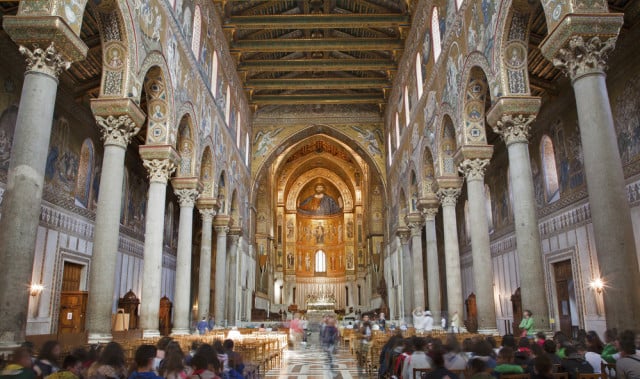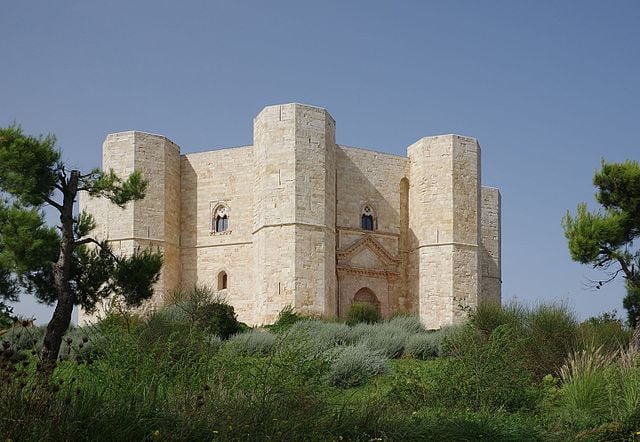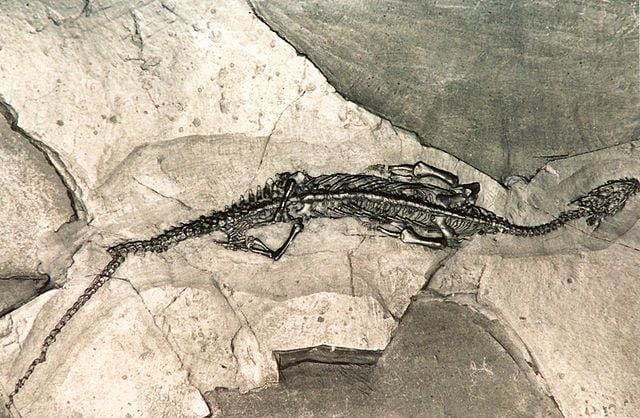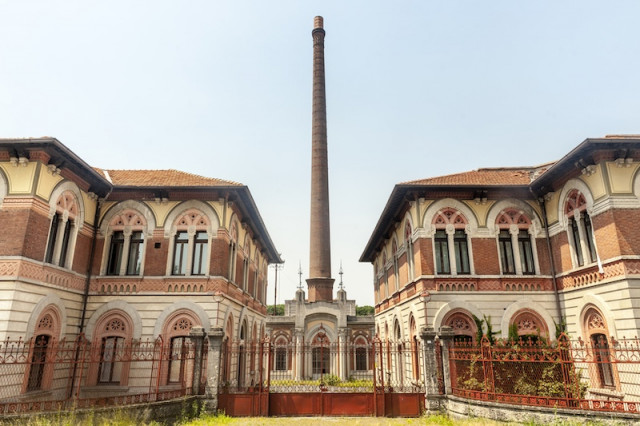Five Italian Unesco sites you won't have heard of

With 54 spots on the Unesco World Heritage list, Italy is the most Unesco-rich country in the world. But how many of Italy's Unesco sites have you heard of?
This weekend the not-so-well-known industrial city of Ivrea became the latest of Italy's cultural treasures to gain world heritage status.
While the historic centres of Rome, Florence and Pompeii are world-famous, Italy is teaming with Unesco sites that may just have slipped under your cultural radar. Here are a few candidates...
Arabo-Norman cathedrals of Cefalù and Monreale – Sicily

The interior of Monreale cathedral and Crist Pantocrator. Photo: sedmak/DepositPhotos
These two cathedrals capture the artistic zeitgeist of Palermo over 900 years ago. Under Norman rule between 1072 and 1194, Palermo was a melting pot of cultures, creeds and ideas. This gave rise to a unique and breathtaking form of architecture, which is known as Arab-Norman.
The cathedrals of Cefalù and Monreale are two exceptional examples, and show how Arab, Norman and Byzantine cultures overlapped in northen Sicily almost a thousand years ago. The perfect expression of this overlap can be seen in the impressive gold mosaics of Christ Pantocrator that adorn both Cathedrals.
Curious fact: Arab-Norman Palermo almost never existed. In 1062, the Normans abandoned their first attempt at invading Palermo, because their camp was infested with tarantulas.
Castel del Monte – Puglia

The oddly octagonal Castel del Monte. Photo: Berthold Werner, CC BY-SA 3.0 via Wikimedia
Built on a small and lonely hill in the 1240s by Frederick II, one of the most powerful Holy Rome Emperors of the Middle Ages, the castle is an imposing and intriguing building thanks to its unusual octagonal design.
Its modest dimensions, just 56 meters wide and 26 meters high, have baffled scholars for years, who still debate whether or not it was a citadel or hunting lodge.
Either way, after Frederik II's time, it was used both as a prison and a refuge for plague victims, giving it a rich and colourful history.
Curious fact: In the 1950s scientists from Farmitalia Research Laboratories found a microbe (Strepromyces peucetius) in the soil around the castle that produced a red pigment. Once the microbe was isolated it was used to produce the anti-cancer medicine, Daunorubicin.
Monte San Giorgio – Lombardy

A perfectly preserved Pachypleurosaurus found on San Giorgio. Photo: GPL, Enlace
The pyramid-shaped Monte San Giorgio stands next to Lake Lugano on the border with Switzerland. At just over 1,000-meters tall and covered in trees – it looks no different to any of the surrounding mountains – but what makes San Giorgio different lies deep underground.
Thanks to a geological fluke, Monte San Giorgio contains the best known collection of marine fossils from the Triassic period. The mountain's fossils have been studied for the past 150 years, providing complete skeletons of ichthyosaurs, nothosaurs, placodonts, and the remarkable 'giraffe-necked' Tanystropheus. These are finds which, while difficult to pronounce, have contributed in a big way to the fossil record showing the evolution of vertebrates,
Curious fact: The mountain is still teaming with life today and its woody slopes provide a home for 37 endangered species of vertebrates.
Su Nuraxi di Barumini – Sardinia

Su Nuraxi di Barumini. Photo: Francesco Ghiani, CC BY-SA 3.0 via Wikimedia
This site was chosen as a fine example of a Nuraghe. The ruins of over 7,000 Nuraghes dot the Sardinian landscape - but what are they?
Nuraghes are large dome-shaped towers made from rocks that are only found in Sardinia. Their construction method is ingenious: heavy rocks were used to make the lower part of the walls, while the gravity-defying domes were built from lighter rocks and earth.
They could reach up to 30 meters in height, which is incredible given that they were built between 190 and 730 BC.
Curious fact: In spite of their prevalence on Sardinia, nobody knows what function the Nuraghes actually served.
Crespi d'Adda – Lombardy

Crespi d'Adda. Photo: clodio/DepositPhotos
Crespi d'Adda is a model village built by the forward-thinking industrialist, Cristoforo Crespi, in 1868. Crespi was a rich textile producer and built the village to meet his worker's needs. The village includes a hospital, school, theatre, cemetery and wash house.
It was so well designed that in the 50 years that the town was under the conrol of the Crespi family there were no strikes or incidents of public disorder. Sadly, the great depression and the arrival of Fascism put an end to Crespi's utopian project.
Today the village is inhabited by the descendants of the original workers.
Did you know: Both the town and factory were lit by electric light, making Crespi d'Adda the first village in Italy to have modern public lighting.
This article was first published in July 2015 and updated in July 2018.
Comments
See Also
This weekend the not-so-well-known industrial city of Ivrea became the latest of Italy's cultural treasures to gain world heritage status.
While the historic centres of Rome, Florence and Pompeii are world-famous, Italy is teaming with Unesco sites that may just have slipped under your cultural radar. Here are a few candidates...
Arabo-Norman cathedrals of Cefalù and Monreale – Sicily

The interior of Monreale cathedral and Crist Pantocrator. Photo: sedmak/DepositPhotos
These two cathedrals capture the artistic zeitgeist of Palermo over 900 years ago. Under Norman rule between 1072 and 1194, Palermo was a melting pot of cultures, creeds and ideas. This gave rise to a unique and breathtaking form of architecture, which is known as Arab-Norman.
The cathedrals of Cefalù and Monreale are two exceptional examples, and show how Arab, Norman and Byzantine cultures overlapped in northen Sicily almost a thousand years ago. The perfect expression of this overlap can be seen in the impressive gold mosaics of Christ Pantocrator that adorn both Cathedrals.
Curious fact: Arab-Norman Palermo almost never existed. In 1062, the Normans abandoned their first attempt at invading Palermo, because their camp was infested with tarantulas.
Castel del Monte – Puglia

The oddly octagonal Castel del Monte. Photo: Berthold Werner, CC BY-SA 3.0 via Wikimedia
Built on a small and lonely hill in the 1240s by Frederick II, one of the most powerful Holy Rome Emperors of the Middle Ages, the castle is an imposing and intriguing building thanks to its unusual octagonal design.
Its modest dimensions, just 56 meters wide and 26 meters high, have baffled scholars for years, who still debate whether or not it was a citadel or hunting lodge.
Either way, after Frederik II's time, it was used both as a prison and a refuge for plague victims, giving it a rich and colourful history.
Curious fact: In the 1950s scientists from Farmitalia Research Laboratories found a microbe (Strepromyces peucetius) in the soil around the castle that produced a red pigment. Once the microbe was isolated it was used to produce the anti-cancer medicine, Daunorubicin.
Monte San Giorgio – Lombardy

A perfectly preserved Pachypleurosaurus found on San Giorgio. Photo: GPL, Enlace
Thanks to a geological fluke, Monte San Giorgio contains the best known collection of marine fossils from the Triassic period. The mountain's fossils have been studied for the past 150 years, providing complete skeletons of ichthyosaurs, nothosaurs, placodonts, and the remarkable 'giraffe-necked' Tanystropheus. These are finds which, while difficult to pronounce, have contributed in a big way to the fossil record showing the evolution of vertebrates,
Curious fact: The mountain is still teaming with life today and its woody slopes provide a home for 37 endangered species of vertebrates.
Su Nuraxi di Barumini – Sardinia

Su Nuraxi di Barumini. Photo: Francesco Ghiani, CC BY-SA 3.0 via Wikimedia
Nuraghes are large dome-shaped towers made from rocks that are only found in Sardinia. Their construction method is ingenious: heavy rocks were used to make the lower part of the walls, while the gravity-defying domes were built from lighter rocks and earth.
They could reach up to 30 meters in height, which is incredible given that they were built between 190 and 730 BC.
Curious fact: In spite of their prevalence on Sardinia, nobody knows what function the Nuraghes actually served.
Crespi d'Adda – Lombardy

Crespi d'Adda. Photo: clodio/DepositPhotos
It was so well designed that in the 50 years that the town was under the conrol of the Crespi family there were no strikes or incidents of public disorder. Sadly, the great depression and the arrival of Fascism put an end to Crespi's utopian project.
Today the village is inhabited by the descendants of the original workers.
Did you know: Both the town and factory were lit by electric light, making Crespi d'Adda the first village in Italy to have modern public lighting.
This article was first published in July 2015 and updated in July 2018.
Join the conversation in our comments section below. Share your own views and experience and if you have a question or suggestion for our journalists then email us at [email protected].
Please keep comments civil, constructive and on topic – and make sure to read our terms of use before getting involved.
Please log in here to leave a comment.